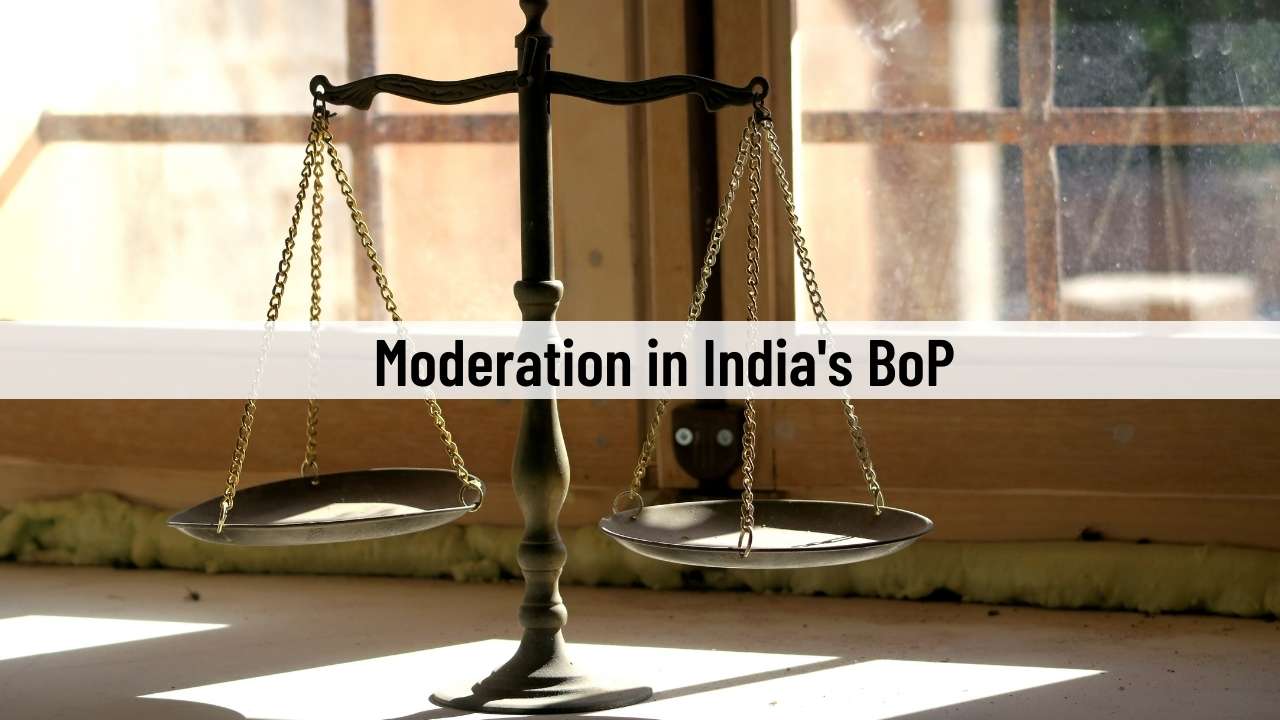Market Outlook for 06th December 2024
Moderation in India's BoP

Last Updated: 10th December 2022 - 05:58 pm
The high merchandise trade deficit along with the fund outflow from the stock markets has weakened India’s external account or Balance of Payment (BoP) position. India’s BoP slipped into a deficit of $16 billion in Q4FY22 for the first time in the last 13 quarters (since Dec’18) after recording a marginal surplus of $ 0.47 billion in Q3 FY22.
For the financial year, although the BoP recorded a surplus of $ 47.5 billion, it was lower by $ 40 billion or 46% than that in FY21 and the weakest in three years. The lower foreign currency receipts compared with payments/outflows have been weighing down the Indian Rupee which has depreciated by over 5% since the start of 2022.
For Q4FY22, India reported a current account deficit (CAD) of $ 13.4 billion which is 1.5% of the GDP. Although lower than that in Q3 (where the CAD was $ 22 billion or 2.6% of the GDP), the deficit was higher than a year ago ($ 8.2 billion or 1% of GDP). For FY22, the CAD came in at $ 38 billion or 1.2% of GDP as against a surplus of $ 24 billion or 0.9% of GDP in FY21 which was the highest in three years. The widening of the current account deficit in FY22 was primarily due to the surge in the merchandise trade deficit which nearly doubled from that in the previous year to $ 189 billion owing to the higher imports of goods associated with a revival in economic activity and rise in global commodity prices.
In terms of the financial flows in FY22, the net total foreign investment inflow (FII) of around $ 22 billion was 73% lower than in FY2021. This was mainly due to the net foreign portfolio investments (FPI) outflow to the tune of $ 16.8 billion which is in sharp contrast to the net inflows of $ 36 billion in FY2021. Although foreign direct investment (FDI) registered net inflows, the quantum at $ 38.67 billion was 12% lower YoY.
Key highlights of India’s BoP:
- The sequential decline in CAD in Q4FY22 (by nearly $ 9 billion) can be attributed to the lower trade gap (by $ 5.8 billion) as well as the reduced net outflow of primary income (by $ 3 billion) which comprises compensation of employee and investment income.
- Net services receipts increased 21% on a year-on-year basis, the sharpest growth in a decade. This increase was driven by the (net) earnings from computer and business services (31% growth YoY).
- Private transfer receipts, mainly comprising of remittances (65% share) increased by 3.8% YoY to $ 52 billion in FY22. However, remittances (net) for the year were 7% lower than that in FY20.
- Net external commercial borrowings (ECB) to India in FY22 were notably higher at $ 7.4 billion v/s $ 0.2 billion in FY21. It was nevertheless significantly lower than $ 21.7 billion in FY20.
Looking Ahead:
For the current financial year, the CAD is expected to widen and be in the range of 2.6% to 2.8% of GDP. This has implications for the rupee. The weakness in the Indian rupee is to prevail and the rupee is expected to move in the range of $77.5 to $79 over the next 2-3 months.
- Flat ₹20 Brokerage
- Next-gen Trading
- Advance Charting
- Actionable Ideas
Trending on 5paisa
Market Outlook Related Articles
Disclaimer: Investment in securities market are subject to market risks, read all the related documents carefully before investing. For detailed disclaimer please Click here.
 5paisa Research Team
5paisa Research Team
 Sachin Gupta
Sachin Gupta




